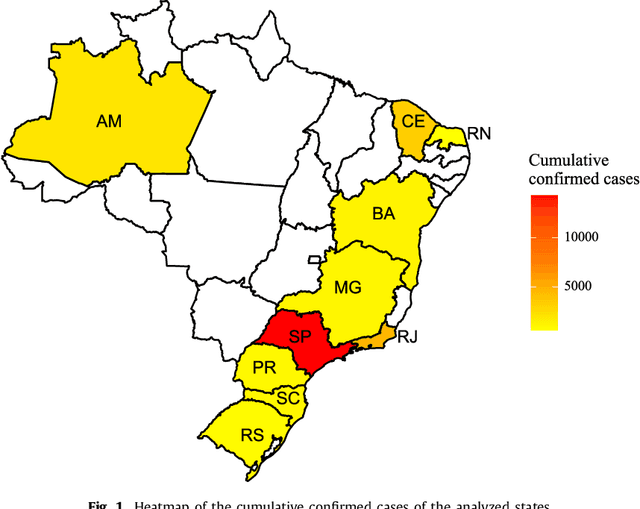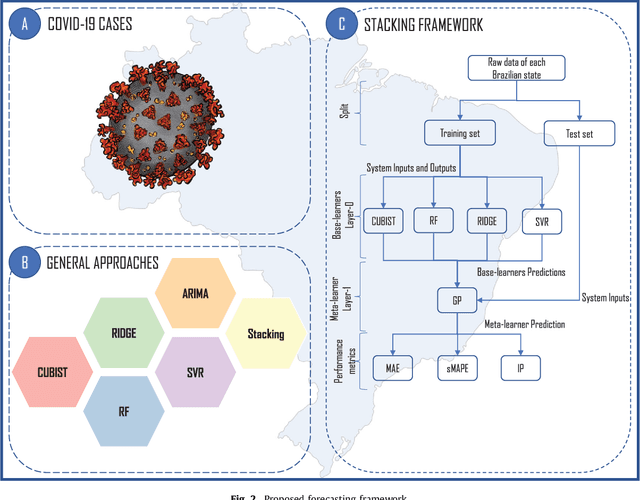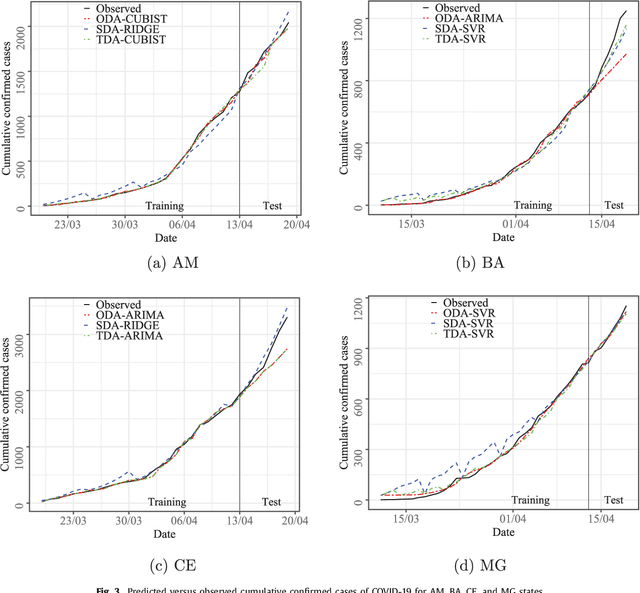Short-term forecasting COVID-19 cumulative confirmed cases: Perspectives for Brazil
Paper and Code
Jul 21, 2020



The new Coronavirus (COVID-19) is an emerging disease responsible for infecting millions of people since the first notification until nowadays. Developing efficient short-term forecasting models allow knowing the number of future cases. In this context, it is possible to develop strategic planning in the public health system to avoid deaths. In this paper, autoregressive integrated moving average (ARIMA), cubist (CUBIST), random forest (RF), ridge regression (RIDGE), support vector regression (SVR), and stacking-ensemble learning are evaluated in the task of time series forecasting with one, three, and six-days ahead the COVID-19 cumulative confirmed cases in ten Brazilian states with a high daily incidence. In the stacking learning approach, the cubist, RF, RIDGE, and SVR models are adopted as base-learners and Gaussian process (GP) as meta-learner. The models' effectiveness is evaluated based on the improvement index, mean absolute error, and symmetric mean absolute percentage error criteria. In most of the cases, the SVR and stacking ensemble learning reach a better performance regarding adopted criteria than compared models. In general, the developed models can generate accurate forecasting, achieving errors in a range of 0.87% - 3.51%, 1.02% - 5.63%, and 0.95% - 6.90% in one, three, and six-days-ahead, respectively. The ranking of models in all scenarios is SVR, stacking ensemble learning, ARIMA, CUBIST, RIDGE, and RF models. The use of evaluated models is recommended to forecasting and monitor the ongoing growth of COVID-19 cases, once these models can assist the managers in the decision-making support systems.
 Add to Chrome
Add to Chrome Add to Firefox
Add to Firefox Add to Edge
Add to Edge